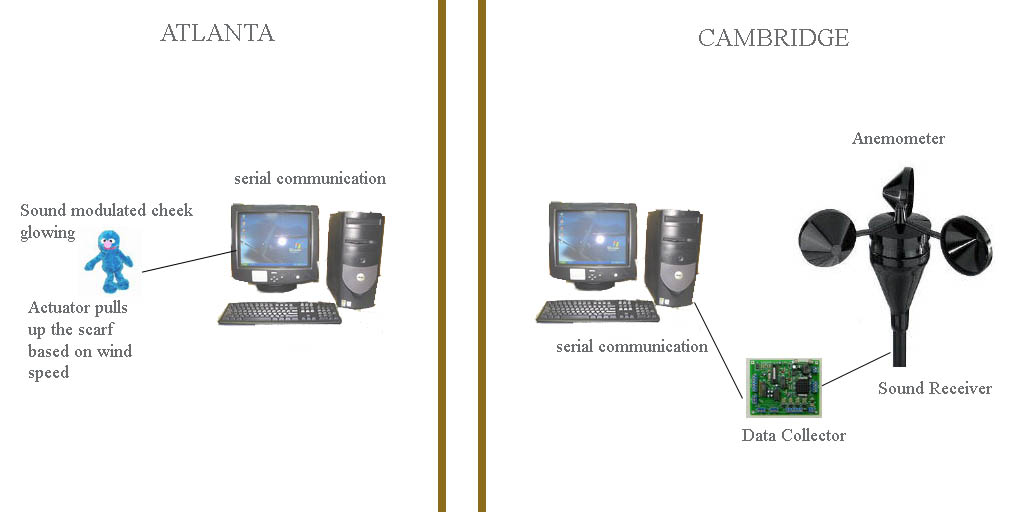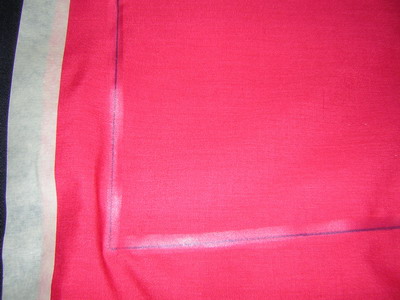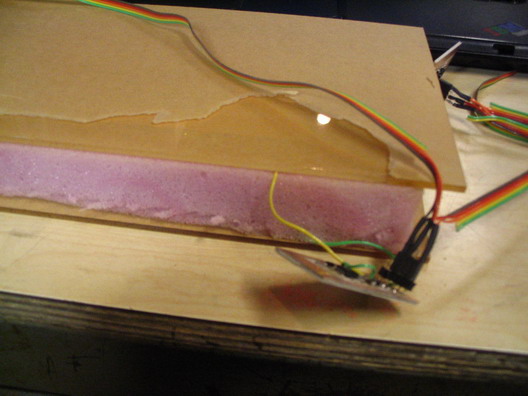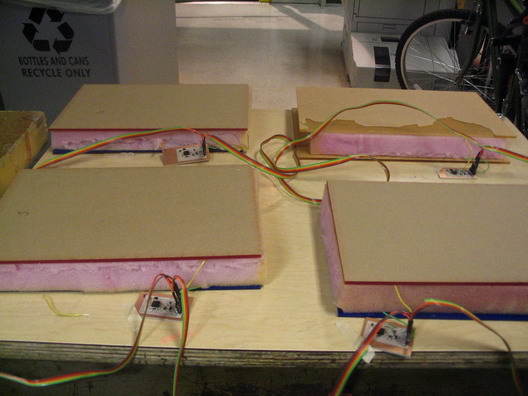Project Ideas
October 7, 2005
My first project idea is for an immersive learning environment. Current immersive learning is based on complete immersion in a new subject to gain skills in the subject. For language learning, the learner has a non-stop bombardment of the language by language speakers. Since I would like to learn Spanish, but I don't necessarily have time to hang out with native speakers, I would like to build my own.
The general idea is to create a prototype of this environment around objects in a kitchen. Objects in the kitchen would be tagged with their identity. I would make wearable device that would contain the different vocabulary words as well as stories describing the use of each object. This way, once the object is touched, the bombardment of contextual language speaking begins. An animation of this idea can be found here.
Requirements:
- board containing language sound bytes
- tagging mechanism for kitchen objects (differentiated sensing)
- actual objects (3D printer)
October 14, 2005
I am in the process of reconsidering my final project. The other day I was outside on the phone with my mother when the wonderful Cambridge wind started blowing. Immediately she said, "Oh my! Is that the wind." I responded affirmatively and she observed that it must be getting colder up here. Well since she lives in Atlanta, and is originally from New Orleans, LA, she doesn't REALLY know what cold is or how bad the wind makes the weather for me. I decided I wanted to make her something to communicate to her what the weather is like in Cambridge and how it makes me feel.
My
project idea is to build an anemometer attached to a sound receiver that
will sit outside my window. Each time the wind blows, both the sound
and the wind speed will be collected and sent to a program which will
communicate to my mother's computer via the Internet. My mother's computer
will have a doll whose cheeks will glow based upon the sound receiver.
Additionally, the doll will have a scarf that will be pulled onto its
shoulder when the wind speed reaches a certain level. The figure below
shows what will be necessary for my project. 
November 25, 2005
Baile Baile,Simon Dice
This idea is a cross between Dance, Dance Revolution and the Simon Says memory game. I would like to create an on
screen simon-like board that will call out the colors to touch (i.e. azul, azul, rojo, verde) and the game player has to
remember and follow the sequence.
Needs:
Floor board with the different colors
Capacitive sensors to know if person has touched the correct color
Software to show the color sequence
December 14, 2005
Things are going relatively smoothly. Because I have switched to the ATtiny 26, I had to make a new programming cable yesterday. I used a 28 pin 3M clip and a male DB25 -- we were out of them so I asked Sherry to order more. While I made the clip, I cut my board to which has the 5 sensors that I will use to identify the pads on the floor mat.
Floor Pad
I bought a few yards of red, yellow, blue, black, and green polyester fabric for the floor mat. after cutting a large one for the black, I cut four rectangles from the other to make the foot pads. John (as usual) graciously helped me to use the ultrasonic welding machine to weld the pieces together. The following pictures are of the welding and the unfinished floor pad

I also started working on the code for the Tiny26. I ran into some problems because the ADC initialization is different. I emailed out to the class to see if anyone had some example code to help me out.
I finally was able to compile code with no errors so I started testing two pads. At first my bit rate was too high so I had to hook the board up to the oscilloscope to see how it was firing. After finding an appropriate bit rate (b = 27) I was able to get readings from the board. Hopefully tomorrow I will be able to differentiate between the pads.
December 16, 2005
So much for things going smoothly. The way I wired my pads for the floorpad causes a lot of interference with the capacitance measures -- since they all originate from the same board, the is plenty of opportunity for crosstalk between the wires. After speaking with Neil, I decided to try shielding the wires. I connected the sheild to ground and the powered the board. This turned out to be backwards so I tried driving, rather than grounding, the shield. This worked decently, but not good enough since the capacitance changes are so small they are hard to detect.Now I have decided to move on to four different boards taking their own measurements and sending and receiving on a serial but. Hopefully, this will prove beneficial and I will be able to make this game work. My first mistake with my new capacitive boards was putting a sending wire with no receiving capability. In order to be able to do this, I have to have a zener diode and a resistor -- similar to the echo board we did earlier on. I was able to finish the floor pad. It came out nicely and the welding is very robust.
December 18, 2005
Baile Baile,Simon Dice -- The almost final version!

The overall idea of this game is to make a cross between Dance, Dance Revolution and the Simon Memory game. This game will be educational, in that it can help build memory skills, interactive in that two people can play rather than in being an interaction solely with a computer, and encourages movement since it's a pad on the floor. Here's the interaction: Player 1 touches yellow and we here amarillo. Player 2 presses yellow and blue, and we here amarillo, azul. This pattern continues back and forth until someone fails to remember what happens next. So what fab skills were involved?
1. The floor pad: ultrasonic welding
I bought a few dollars of fabric from Sew-Low Discount fabrics in Cambridge and cut out the pieces. I taped each piece to the larger fabric to hold them secure and worked with John to weld each colored square onto the larger black square. Once the pieces were welded, I cut out the other side so the colors would show through.
2. The floor boards: laser cutting
In order to have a robust place for people's feet, I decided to shield the sensors (discussed next) with acrylic boards. I cut 8"x6" rectangles for each of the four pads. This was relatively simple and the only setback was finding acrylic with so much being used at the end of the semester.
3. Capacitive Sensing: Modela milling, stuffing, networking
As I said on my last "diary" entry, I switched from one board to Neil's suggested 4 boards so that each pad would have its own board. I finally built all of the boards necessary for the pad -- red, blue, green, and yellow. You can see a picture of one below. I also built a master controller that actually communicates with the computer.


For final project presentations, I had tried, unsuccessfully, to switch from a Linux machine to a Windows machine. As a final act of triage, I just decided to run the floor pad from the Linux and demonstrate my interface on the computer. Here is a picture of the floor pad and a video of the game working.

It shouldn't be very hard to take the next step to connect the two. I also think it would be fun to work with Amon to get everything working in Scratch.